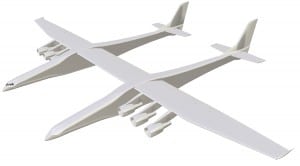
Stratolaunch Systems is “very likely” to use more than two multi-stage boosters on its carrier aircraft in a response to market demands for smaller satellites, Executive Director Chuck Beames told Defense Daily Friday.The announcement is a dramatic departure from the company’s original plan of launching one multi-stage booster from its massive 385-foot wingspan carrier aircraft. Beames said development of the multi-stage booster has been paused for about six or seven months as “teams and teams” of Stratolaunch employees evaluate different…

 By
By 











